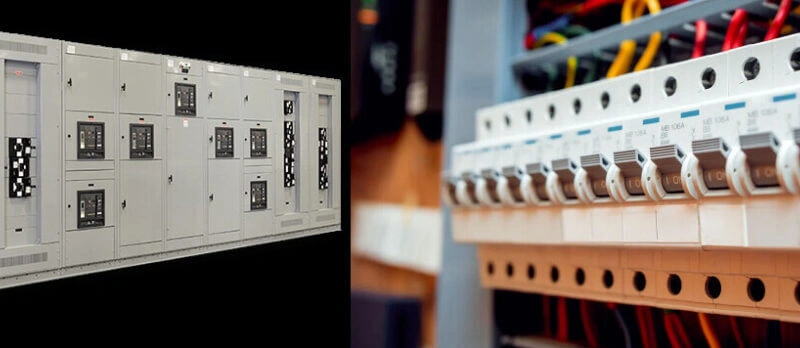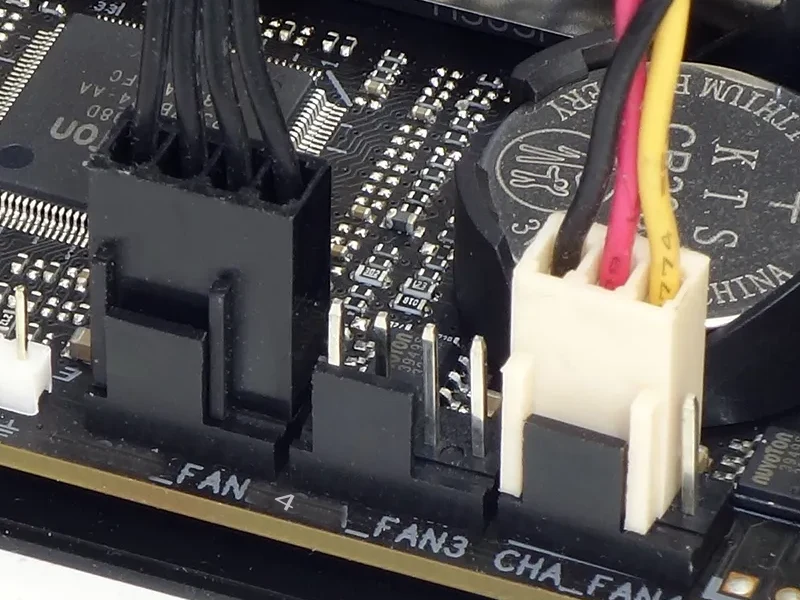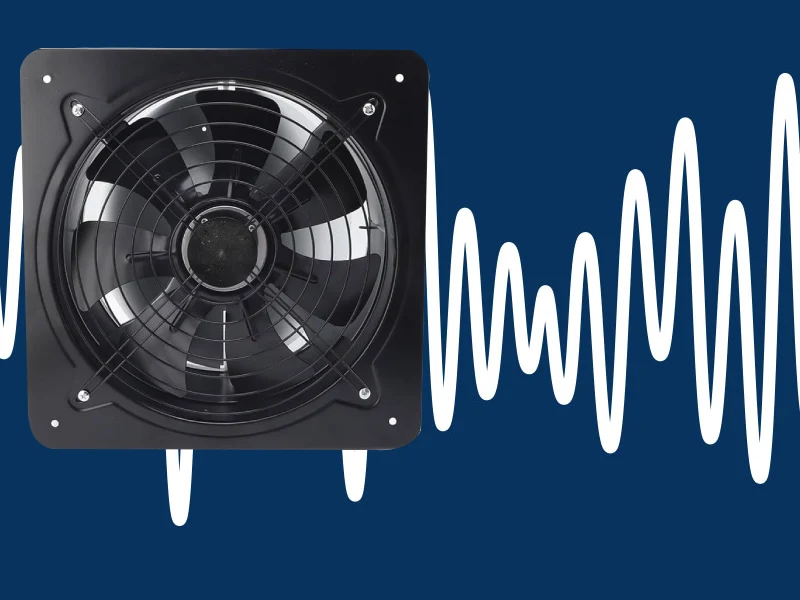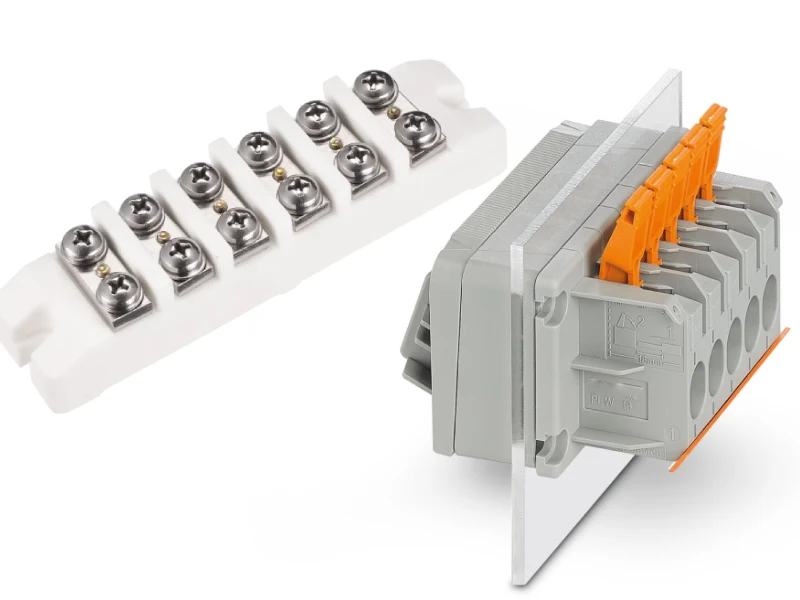Switchgear vs switchboard is an important topic today. Switchgear handles high-voltage power and has more safety features. Switchboards work with lower voltages and use simpler parts.

Picking the right equipment can make things safer. It can also help systems work better and save money. The switchboard market is getting bigger around the world. New trends include IoT features and modular designs.

Knowing the difference between switchgear and switchboard is important. This helps make sure the system fits its power and safety needs.
Key Takeaways
- Switchgear works with high or medium voltages and has strong safety features. Switchboards handle low voltages and give basic protection. Switchgear gives better protection and control. It is best for big factories and power companies. Switchboards are good for small places like offices and schools. You must pick the right equipment for your voltage, safety, space, and money needs. Switchgear costs more but is more reliable.
- New switchgear and switchboards use smart tools like IoT and AI. These tools help with watching, safety, and making systems flexible. Following safety rules and knowing the difference keeps people safe. It also helps systems work well.
Switchgear vs Switchboard Overview

Definitions
Switchgear and switchboards are both important in moving electricity. Switchgear is a group of devices that help control and protect electrical systems. These devices include circuit breakers, fuses, and disconnect switches. Switchgear can work with low, medium, or high voltages.
People use switchgear in substations, factories, and big buildings. International rules say switchgear is a metal box that is closed on all sides. It holds the main power switches and other control parts.
Switchboards help send electricity around a building or place. They usually work with less than 600 volts. A switchboard has panels with switches, circuit breakers, and meters. These panels split up the power into smaller circuits.
Switchboards are easier to use and cost less than switchgear. They are made for sending out power and giving basic protection.
UL 891 is the rule for low-voltage switchboards. It tells how to design and test them for safety. This makes sure switchboards work safely in normal and bad situations.
| Equipment Type | Definition (NEC Article 100) | Construction & Access | Typical Voltage Range | Standards Referenced |
|---|---|---|---|---|
| Switchgear | An assembly completely enclosed on all sides and top with sheet metal (except ventilating openings and inspection windows) containing primary power circuit switching and interrupting devices, buses, and connections. May include control and auxiliary devices. Access via doors or removable covers. | Fully enclosed metal assembly; designed for improved reliability and maintainability. | Low-voltage and higher; used in various configurations. | UL 1558, ANSI/IEEE C37.20.1, ANSI C37.51 |
| Switchboard | A large single panel, frame, or assembly of panels with switches, overcurrent and protective devices, buses, and usually instruments mounted on face or back. Generally accessible from front and rear; not intended for cabinet installation. | Simpler construction; generally less reliable but lower cost; may include panelboards and transfer switches. | Typically low-voltage, generally under 600V. | UL 891, NEMA PB 2 |
Core Functions
Switchgear’s main job is to keep electrical circuits safe and under control. It finds problems and stops power to protect people and equipment. It uses things like circuit breakers, fuses, and relays. Switchgear can be used for low, medium, or high voltages. It often has extra safety features and can be controlled by hand or by machines.
Switchboards are made to send power to different places. They help organize and move electricity to many circuits. Switchboards use busbars, circuit breakers, and meters to do this. They give basic protection from too much power or short circuits. You can find switchboards in schools, offices, and small factories.
| Function | Switchgear | Switchboard |
|---|---|---|
| Primary Role | Protection, control, and isolation of electrical circuits, including fault detection and interruption to ensure safety and operational stability. | Distribution and organization of electrical power to various circuits and loads, providing connectivity, metering, and control functions. |
| Key Components | Circuit breakers, fuses, relays, disconnect switches | Busbars, circuit breakers, meters, control devices |
| Voltage Range | Low, medium, and high voltage circuits | Typically low voltage circuits |
| Safety Focus | Rapid fault detection and isolation to protect equipment and personnel | Provides connectivity and power distribution with basic protection features |
| Control | Manual or automatic control of power flows, including remote monitoring and intelligent control features | Monitoring, measuring, and controlling electrical parameters through meters and switches |
Switchgear gives better protection and can handle more voltage. Switchboards are best for low-voltage power and simple needs. Both types help keep electrical systems safe and working well.
Key Differences Between Switchgear and Switchboards
Knowing the main differences between switchgear and switchboards helps people pick the right one for their electrical systems. Each one has its own job for safety, protection, and control. The next parts show how they are different in voltage, protection, parts, how they are built, space, and price.
Voltage Handling
Switchgear and switchboards work with different voltages. Switchgear can handle low to very high voltages. It can manage up to 350,000 volts. This makes it good for big factories and power plants. Switchboards are made for lower voltages, up to 600 volts. You see them in homes and businesses.
| Equipment | Voltage Range | Typical Settings |
|---|---|---|
| Switchboards | Up to 600 volts | Commercial and residential |
| Switchgear | Up to 1,000 volts (LV); 1,000 to 36,000 volts (MV); up to 350,000 volts (HV) | Industrial, utility, and critical infrastructure |
Switchgear is best for high-voltage jobs. Switchboards are better for low-voltage places.
Protection and Safety
Switchgear has more safety features than switchboards. It uses special designs to keep people and equipment safe. Switchgear has ways to stop dangerous arc flashes very fast. These features help prevent injuries and damage.
Switchboards give basic protection with circuit breakers and fuses. They do not have special arc flash protection. They also do not have tests for arc resistance. This means switchgear keeps workers and equipment safer, especially with high voltages.
| Feature | Switchgear | Switchboard |
|---|---|---|
| Arc-resistant design | Yes, with heavy-duty construction | No accepted AR design |
| Arc blast venting systems | Present (plenum and duct systems) | Typically absent |
| Personnel protection level | High, reduces PPE requirements | Lower, higher PPE needed |
| Testing standards for arc resistance | IEEE C37.20.7-2007 | Not applicable |
Switchgear’s extra safety features make it the best choice for high-voltage and important power systems.
Components
Switchgear and switchboards have different parts inside. Switchgear has smart relays, metal barriers, and special circuit breakers that can be pulled out. It also supports advanced controls. These things help watch and control the system closely.
Switchboards use simpler parts. They have fixed circuit breakers, busbars, meters, and sometimes panelboards or transfer switches. Switchboards do not have the advanced protection or separate sections like switchgear.
| Component Type | Present in Switchgear | Present in Switchboard |
|---|---|---|
| Intelligent Relays | Yes | No |
| Compartmentalized Metal Barriers | Yes | Rarely |
| Draw-out Circuit Breakers | Yes (800 A to 6,000 A) | Sometimes (lower ratings, simpler design) |
| Complex Control Schemes | Yes | No |
| Panelboards/Transfer Switches | No | Yes |
Switchgear’s advanced parts give better protection and control for tough electrical jobs.
Construction and Space
How they are built and how much space they need is also different. Switchgear uses a modular design with separate sections for breakers, busbars, and cables. This makes it safer and easier to fix. Gas-insulated switchgear can save a lot of space. Switchgear boxes are sealed and grounded, which makes them last longer and need less fixing.
Switchboards are built more simply. They can be connected from the front or back, which changes their size and how you reach them. Inside, they are not usually separated into sections, but some types are safer. Switchboards are smaller and fit well in tight spaces, but they do not protect as well as switchgear.
- Switchgear needs more room because of its design.
- Switchboards are smaller and easier to put in small places.
- Both must follow safety rules for space and working safely.
Cost
Price is a big thing to think about when choosing. Switchgear costs a lot more than switchboards for the same job. The higher price is because switchgear is stronger and has more safety features. It can cost two to three times more to put in switchgear. Over time, the higher price may be worth it because it protects better and has less downtime.
Switchboards are cheaper for low-voltage jobs. They cost less to buy, put in, and keep working. For most homes and businesses, switchboards give enough protection and power at a lower price.
Comparison Table: Switchgear vs Switchboard
| Criteria | Switchgear | Switchboard |
|---|---|---|
| Voltage | Low, medium, and high-voltage (up to 350 kV) | Low-voltage (up to 600 V) |
| Current Rating | Up to 6,000 A | Up to 5,000 A |
| Protection | Advanced arc flash, relays, isolation, fast interruption | Basic circuit breakers, fuses |
| Safety Features | Arc-resistant, venting, compartmentalized, high personnel protection | Basic, no arc-resistant design |
| Components | Draw-out breakers, intelligent relays, complex controls | Fixed breakers, meters, panelboards |
| Construction | Modular, robust, front/rear access, sealed compartments | Compact, simple, front/rear access |
| Space | Larger footprint, modular, can be gas-insulated for space savings | Smaller, fits tight spaces |
| Cost | 2-3x higher, reflects advanced features | Lower, economical for low-voltage |
| Maintenance | Frequent, specialized, strict safety protocols | Simpler, less frequent, basic safety |
| Typical Use | High-voltage power systems, industrial, utility, critical infrastructure | Commercial, residential, small industrial |
To sum up, the main differences between switchgear and switchboards are in voltage, protection, safety, parts, how they are built, space, and price. Switchgear is for higher voltages and gives more protection, so it is important for big power jobs. Switchboards are for low-voltage needs and cost less, so they work well in homes and businesses.
Switchboards in Modern Systems

Features
Switchboards are very important in today’s electrical systems. They help control and protect circuits in many buildings. Most switchboards have main parts like circuit breakers and busbars. Busbars are made from copper or aluminum.
There are also clear wiring terminals. Circuit breakers stop short circuits and overloads. Busbars move a lot of electricity inside the switchboard. Safety enclosures are usually made of steel. These enclosures stop people from touching live parts and keep faults inside.
Many switchboards have front panels that can open and lock. These panels make it safe and easy to do repairs. Insulated handles and warning signs help keep workers safe. Some switchboards use heaters to stop water from building up inside.
This helps prevent rust and damage. New switchboards have easy-to-use controls and clear labels. This makes fixing problems faster and easier. Switchboards can be built in sections and can grow as more power is needed. They follow rules like UL 891 and NEMA PB2. These rules make sure switchboards are safe and work well.
Switchboards are now smart parts of modern power grids. They let people watch systems in real time and find problems quickly. They also help use solar and wind power. IoT and AI features help lower downtime and make systems more reliable.
Typical Uses
Switchboards are used in many places that need good power control. Offices and stores use switchboards for lights, air systems, and computers. These switchboards often run at about 208 volts. Factories need switchboards for bigger machines and motors.
These may use 480 or 600 volts. Data centers use special switchboards to keep power steady and save energy.
Other places with switchboards are hospitals, phone centers, and solar or wind sites. Switchboards work with low and medium voltages. They help keep power safe and steady.
Their design makes it easy to add more parts if needed. By protecting equipment and controlling power, switchboards help modern systems run well and stay safe.
Switchgear in Modern Systems
Features
Modern switchgear uses new technology in power systems. Engineers make switchgear to keep power systems safe and under control. Today’s switchgear has digital controls with microprocessors. These controls act very fast and manage power loads well. Many systems can share loads automatically. This helps balance power and makes equipment last longer.
Switchgear often lets people check and fix problems from far away. IoT gives live data and can warn about issues before they happen. Modular designs make it easy to add more parts. Teams can put in new sections without changing the whole system.
Some switchgear uses AI and machine learning. These tools help use power better and plan repairs. Modern switchgear also works with renewable energy. It can handle changing power sources and store extra energy.
Manufacturers use CNC machines to make busbars very accurately. This makes switchgear safer and more reliable. Small, modular switchgear fits in many places and is easy to set up. Extra safety features stop overheating and other problems.
Digital tech finds and fixes issues fast. IoT and Industry 4.0 help with remote checks and planning repairs. Switchgear can change as power needs change, which helps with solar and wind power.
Modern switchgear gives power systems what they need to be safe, reliable, and flexible.
Typical Uses
Switchgear is important in many industries. It works best in medium and high-voltage power systems. Factories use switchgear to protect machines and control big equipment. Utilities use switchgear for sending power and in substations. Big buildings need switchgear for safe power and extra protection.
Switchgear helps find and stop faults in complex systems. It supports factories, utilities, and important buildings. Switchgear is needed when systems need more than just basic power. It keeps people and equipment safe in tough places.
| Industry/Application | Typical Voltage Range | Main Purpose |
|---|---|---|
| Utilities | 1 kV – 350 kV | Protection, control, transmission |
| Industrial Plants | 1 kV – 35 kV | Equipment protection, load management |
| Large Commercial | Up to 35 kV | Safe distribution, advanced protection |
Switchgear is still very important for power systems that need to be safe, reliable, and flexible.
Real World Applications
Commercial Buildings
Commercial buildings need both switchgear and switchboards for safe power. Facility managers talk to everyone before picking equipment. They check voltage, amperage, and what kind of loads are used. They also look at the environment. Space and how people can reach the equipment is important too.
- People look at what the system needs.
- Teams check voltage and types of loads.
- They measure space and how to get to it.
- They pick switchgear or switchboard based on price, repairs, and safety.
Switchgear uses power circuit breakers that stop big surges. This is good for large offices or hospitals that need steady power. Switchboards use molded case breakers. These work well in small offices or stores. The table below shows the main differences:
| Feature | Switchgear | Switchboard |
|---|---|---|
| Voltage Level | Low to high | Low (below 600V) |
| Safety | Arc flash protection, interlocks | Dead-front, basic protection |
| Space | Larger, needs more access | Compact, front accessible |
| Cost | Higher | Lower |
Industrial Facilities
Factories often use switchgear for high voltage and safety. Voltage can go up to 1000V AC in these places. Switchgear here has strong insulation and special sections. It also has good grounding systems. These things help keep workers and equipment safe from shocks.
Switchboards are sometimes used in light industry for smaller circuits. But most factories need switchgear for big fault currents and tough safety rules. Special breakers and relays stop problems from spreading. Good grounding and strong boxes keep things safe inside and outside.
Data Centers
Data centers need steady power to work all the time. Switchgear keeps important systems safe and lets people fix things safely. Switchboards help balance power and keep voltage steady. Workers use computers to watch and change loads fast. Automatic Transfer Switches in switchboards switch to backup power if the main power goes out. This helps stop downtime.
Modern switchboards in data centers can watch systems in real time. They can also guess when something might break. This helps find problems early and keeps things running. Uninterruptible Power Supplies and backup generators work with switchgear and switchboards to protect computers. This setup meets the big needs of data centers and keeps data safe.
Selection Guide
Assessing Needs
Picking between switchgear and switchboards starts with checking what the system needs. Engineers and managers use steps to help them decide. First, they look at where the equipment will go. They check safety, fire, and environmental rules. Next, they think about who will use the equipment. If only trained people use it, they can add more safety features. They also look at the room size and measure space and aisles.
They make sure there are good escape paths. They check if the building has enough space and strong walls and floors. They figure out if the building can handle problems or switchgear use. Switchgear needs more space but lets you fix things without turning off everything. Switchboards, especially front-access ones, fit in small spaces and can go against walls. The choice depends on how complex the system is and what kind of building it is. Switchgear is best for important jobs. Switchboards work well for simple business places.
Safety and Compliance
Safety and following rules are very important when picking equipment. Both switchgear and switchboards must meet tough standards to keep people safe. UL 891 is for low-voltage switchboards up to 1,000 volts. It checks how they are built and if they protect from arc flashes. UL 67 is for panelboards. EUSERC rules help with utility checks. For high-voltage systems, AS 2067 and AS 62271 give design and setup rules. These rules help stop problems like overheating and electrical faults. Meeting these safety rules keeps people and equipment safe. It also helps the system pass checks.
Tip: Always look for the newest rules before putting in a new system. This helps make sure it is safe and follows the law.
Budget Factors
Money is a big part of the choice. Switchgear costs more at first but lasts longer and is easier to fix. Dead front switchgear costs more but stands up to weather and saves money over time. Live front switchgear is cheaper and works in safe places with less risk. Switchboards cost less at the start and are good for projects with small budgets or simple needs. People should look at the total cost, not just the price to buy. Websites that compare products and prices can help find the best choice for both money and needs.
| Equipment Type | Initial Cost | Long-Term Reliability | Maintenance Needs | Best Fit For |
|---|---|---|---|---|
| Switchboard | Low | Moderate | Basic | Offices, retail, light industry |
| Switchgear | High | High | Specialized | Utilities, factories, critical systems |
Myths and Misconceptions
Common Misunderstandings
Some people think switchgear and switchboards are the same. This mistake can lead to picking the wrong equipment. Switchboards send electricity to different places using switches. Their main job is to share power. Switchgear protects, separates, and controls electrical equipment. It uses circuit breakers, disconnect switches, and fuses. Switchgear can stop problems and short circuits without turning off everything else. This keeps the system working and helps stop electrical dangers. Switchboards do not give as much control or protection. People get confused because of differences in how they work, their size, cost, and testing rules. Sometimes people use the names for each other, but each one has its own job for safety.
Picking the wrong equipment can make things more dangerous and less reliable.
Overlapping Features
Some things are found in both switchgear and switchboards, which can be confusing. Here are some reasons people mix them up:
- Draw-out breakers are not just in switchgear. Some switchboards use draw-out insulated case breakers too.
- The outside of some switchgear and switchboards can look almost the same. For example, Square D PZ4 switchgear looks like QED6 switchboards.
- The voltage ratings, like 535V for switchgear and 480V for switchboards, are not always easy to spot if you are not trained.
- Both types might have barriers between breakers and busbars, but this is not special to one or the other.
- Switchgear usually follows ANSI rules, and switchboards follow UL rules. But now, UL covers some switchgear too.
- Some people think only switchgear is strong and safe, but some switchboards are also built tough for safety.
These shared features can make it hard to know which one to use. Knowing the real differences helps keep systems safe and lowers the chance of electrical problems.
Switchgear and switchboards do different jobs in electrical systems. Switchgear controls medium and high voltages. It has strong metal boxes and special safety features like arc flash protection. Switchboards handle low voltages and have easier safety designs. The table below shows how they are different:
| Feature | Switchgear | Switchboard |
|---|---|---|
| Voltage Range | Up to 350kV | Up to 600V |
| Safety Features | Advanced, automatic | Basic |
| Standards | IEEE C37, UL 1558 | UL 891, NEMA PB-2 |
Picking the right equipment keeps people safe and follows safety rules. For hard projects, experts and the latest rules help the most. You can learn more from IEEE, UL, and NEMA resources.
FAQ
What is the main job of switchgear?
Switchgear keeps electrical systems safe from problems. It can turn off power fast if there is trouble. This helps protect people and equipment. Switchgear also lets you control and separate parts of the system.
Can a switchboard replace switchgear in a building?
A switchboard cannot take the place of switchgear in high-voltage or important systems. Switchboards are best for sending out low-voltage power. Switchgear gives more safety and works with higher voltages.
Why does switchgear cost more than switchboards?
Switchgear is made with stronger parts and has better safety features. It must pass hard tests for high-voltage jobs. These things make it cost more. Switchboards have easier designs and are cheaper.
Where do people usually install switchboards?
People put switchboards in offices, schools, and small factories. These places need safe and easy ways to send out power. Switchboards fit in small spaces and work with lower voltages.
How do safety standards differ for switchgear and switchboards?
Switchgear uses rules like UL 1558 and ANSI C37 for high-voltage safety.
Switchboards use UL 891 and NEMA PB2 for low-voltage jobs.
Each rule checks if the design and use are safe.Conclusion
Switchgear and switchboards serve different roles in electrical systems. Switchgear is designed for medium to high-voltage applications and offers advanced protection, while switchboards are used for low-voltage distribution with simpler, cost-effective designs. Understanding their differences helps engineers and decision-makers choose the right solution for safety, reliability, and compliance. Selecting the proper equipment ensures efficient operation, reduces downtime, and aligns with both safety standards and long-term investment goals.




